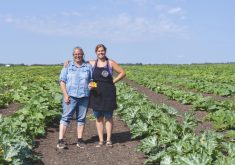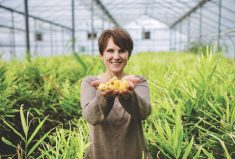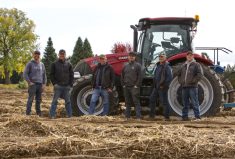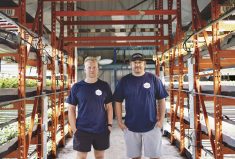The famous and predictable vista of Saskatchewan includes tracts of yellow canola, fields of wheat bending to the endless wind, and more recently, the deep leafy green of soybeans.
But irrigation pivots, rows of cucumbers, beans and corn? Not so much.
Still, despite its small population and few urban centres of size, Saskatchewan folk are demanding more locally grown and fresh produce. And local growers are responding, including growers like Dan Erlandson, a young vegetable producer who’s been gardening since he was 16.
Erlandson is quiet, well-spoken and confident as he talks about the history of his farm and its future potential.
Read Also
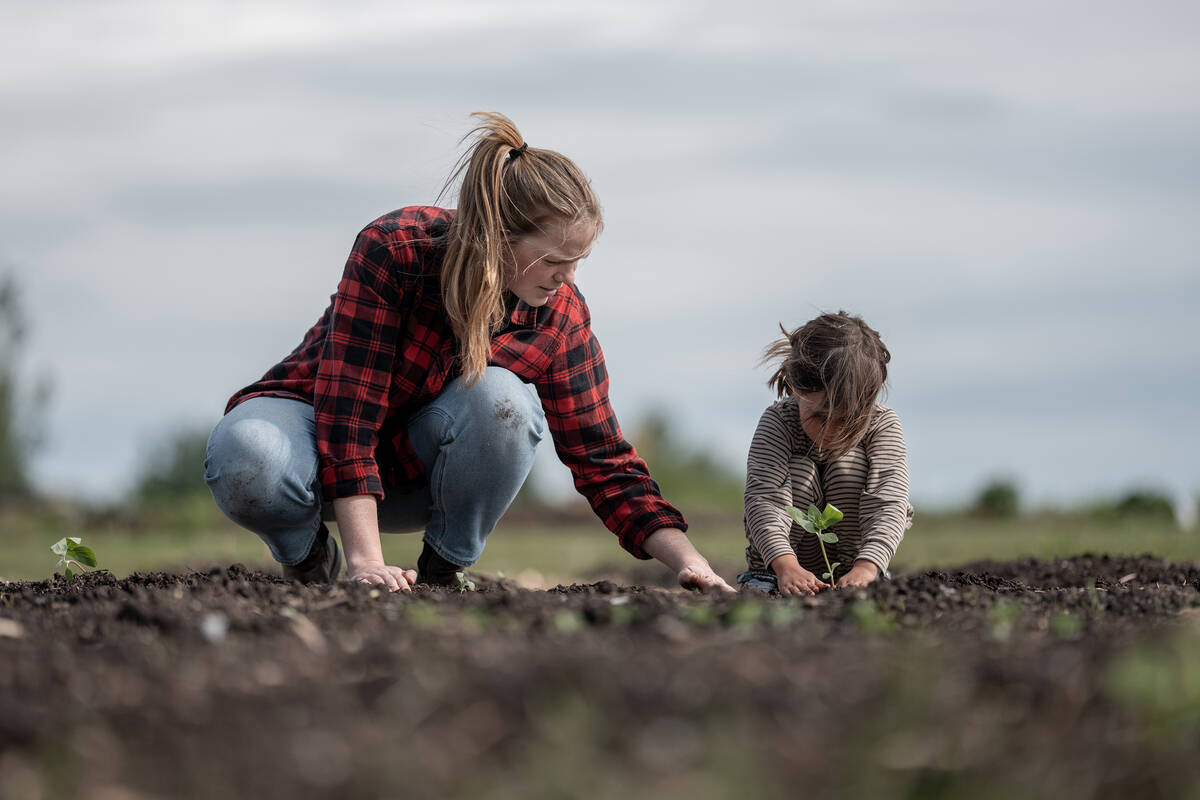
Farm succession: Where to begin?
Recognizing that the process of farm succession is lengthy, involved and requires a solid end goal can help farmers determine where to start.
A green thumb and an entrepreneurial spirit run deep in this family. His mother and grandmother started gardening south of Saskatoon on their farm near Outlook in the mid-’80s, and their efforts morphed into an extra source of income that kept their grandfather’s struggling grain farm alive.
Erlandson’s parents ran Spring Creek Gardens until the late ’90s when they bought the Berry Barn near Saskatoon, a greenhouse and restaurant set along the South Saskatchewan River.
At the old location, Erlandson began to garden in the summer while playing junior hockey in the winter. Now married to Chelsea and with a two-year-old daughter, he is at the forefront of an effort by Saskatchewan vegetable producers to establish more and bigger markets for their fresh field produce.
His Spring Creek Gardens is one of 16 farm members of the newly minted Prairie Fresh Food Corporation (PFFC), which just last spring struck a deal with the Grocery People to supply fresh produce to Federated Cooperatives Limited (FCL). The produce is packaged under the Home Grown Saskatchewan brand with the tag, “Taste the Difference.”
“Three years ago, a couple of guys from the co-op came to us asking about purchasing local product. We had a series of meetings and things grew from there,” Erlandson says. “We started out almost as small and grassroots as you can be.”
The new corporation is striding forward one baby step at a time. Erlandson says slow expansion is necessary with vegetable production because the cost of investment is high and markets are not always predictable.
“Vegetables are not like grain,” Erlandson says. “We don’t always have a market for all of our production, and it has a short shelf life, so we need the markets to be there when the produce is ready… It’s been encouraging that the proposal came from the co-op, which means the pull is from the consumer. It makes us more confident in the market than if we’d have gone looking for it.”
Erlandson grows 70 acres of everything from lettuce and peas to beets and eggplant, all under irrigation in the Outlook Irrigation District south of Saskatoon. He sells almost everything at farmers markets in Regina and Saskatoon, eight per week for most of the summer. He contributed 14 acres of corn to the PFFC deal in its inaugural year while other growers were able to supply 17 different products to FCL through their agreement, including dill, brussels sprouts, rhubarb, beets, beans etc.
While people from Manitoba and Ontario and, well, just about anywhere else in Canada, might be scratching their heads over any level of excitement about the availability of fresh produce, this is a big deal in Saskatchewan.
From the Grainews website: Couple ‘farms’ city garden plots
According to 2010 federal government statistics, the farm gate value of fresh veggies was up 24 per cent compared to the five-year average. The total value of the Canadian fresh produce market was $593 million, and Saskatchewan only accounted for $2 million of that.

Manitoba, with the huge influence of grower-owned vegetable supplier Peak of the Market, had $33 million and Alberta $23 million. So to say vegetables are not a traditional crop for Saskatchewan is an understatement.
But as far back as 1999, reports indicated that vegetable production in Saskatchewan could be profitable and should be developed, particularly through enhanced irrigation projects such as those around Lake Diefenbaker.
Enter Connie Achtymichuk, vegetable specialist with Saskatchewan’s ministry of agriculture. She is a force to be reckoned with, working tirelessly to bring producers together to form PFFC, and helping them approach the province’s retailers. She’s been instrumental in establishing branding and packaging as well.
“Saskatchewan has natural advantages,” Achtymichuk says. “We can grow a good quality crop with very few pesticides.”
Achtymichuk saw the potential for producers if they worked together to build efficiencies around transportation, storage, shipping, packaging, quality controls and uniformity. “We are creating a system where none has existed,” she says, agreeing with Erlandson about the need to move slowly.
She sees a huge potential for growth. “I don’t know if we could have done this 10 years ago because the demand for local food wasn’t there,” she says. “The timing is very good now in terms of consumer interest.”
Ron Welke, associate vice-president of food for FCL, agrees the timing couldn’t be better and says the branding helps customers to recognize that the products are locally grown. “The No. 1 reason we got into this deal is because the products are fresh and we are supporting the local economy… it’s consumer driven, and the growers recognize that and retailers do as well.”
“Dealing with Prairie Fresh Food Corp gives us the ability to do some branding and create excitement,” Welke says. “They are growing to the standards we want, so we can commit to making their product available.”
Erlandson sees the growing demand for locally grown products as simply better consumer awareness. “People didn’t know we could grow vegetables in Saskatchewan. Now they know, and the feedback has been unbelievable.”
“Freshness and quality are more important to people. They like the idea of knowing where their food comes from. They like having some communication with the farmer,” Erlandson says. “It just makes sense to me that if you can buy a carrot that’s grown closer to home, it’s going to be more fresh.”
Erlandson has shown his commitment to growing local. When a tour visited his farm last spring he was busy building housing for the eight temporary foreign workers he employs on the farm every summer. Like many agricultural employers in the province he says he couldn’t operate without them. He also employs six other people to work his booths at the various farmers markets.
PFFC’s future might hinge on getting more producers like Erlandson involved in order to build a more constant wholesale supply. Achtymichuk says one of the challenges is building trust.
“In my dreams we would have 60 producers,” she says. “But growing vegetables is an expensive proposition. They need to know they’ve got a market before they invest.”
Erlandson agrees. “It’s important that communications between producers be wide open. Sharing of information is a really big thing: logistics of growing, storage, agronomy.”
Down the road, the group will need central shipping and packing too, but Erlandson is confident. “If we have success on a small scale for a year or two, others will see and hear about it. I’m sure it will be a natural progression to get more producers involved.”




